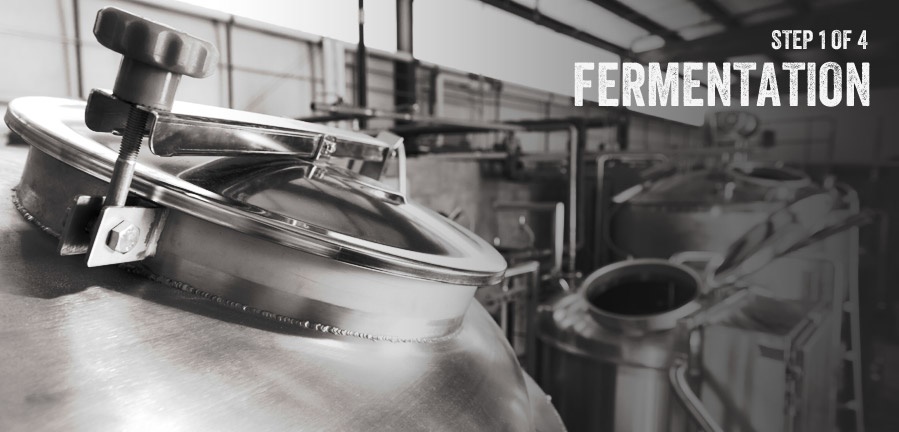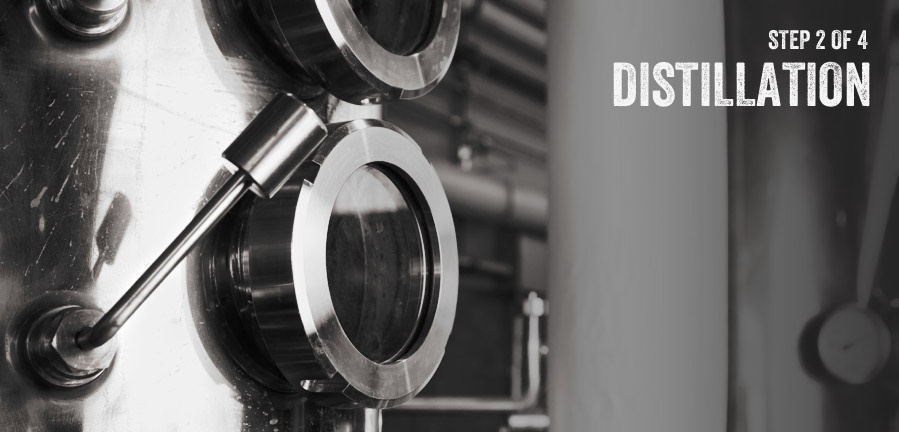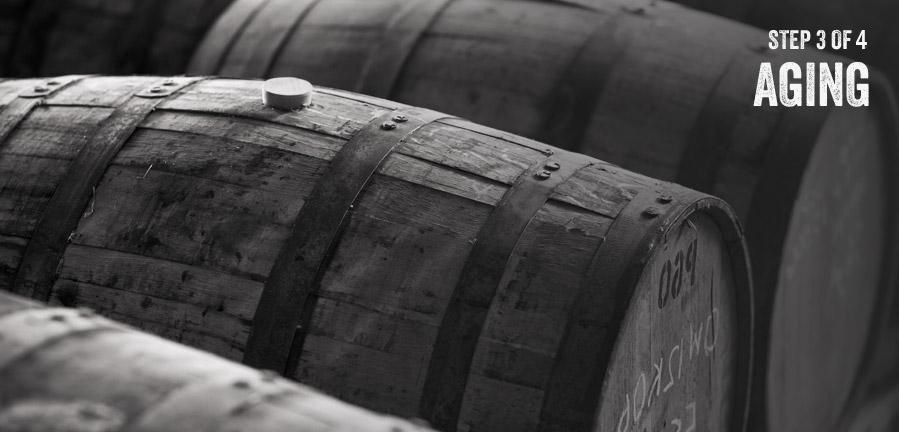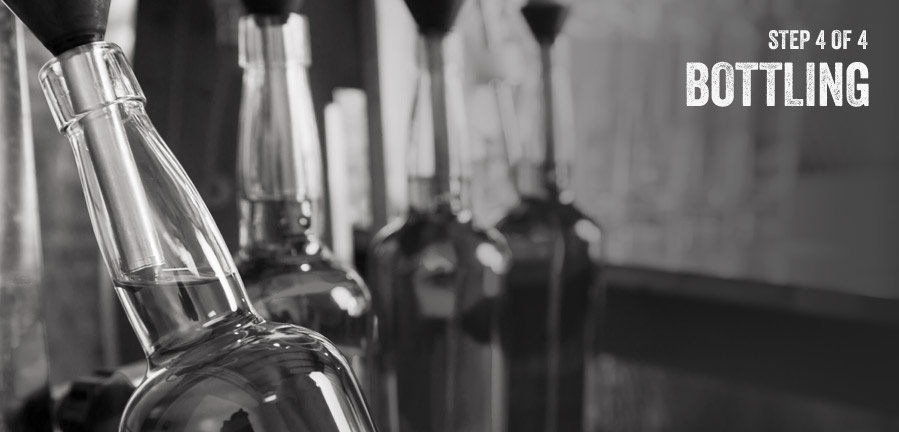
New England Reserve Rum

Our New Reserve Rum begins with our base ingredients of single origin, Grade A molasses made from fine sugar cane grown in the volcanic soils of a single valley in Guatemala. Our sugar producer was founded by a brother and sister team and is a member of Sugar for Good ensuring a commitment to the environment and pro cane worker standards.
We add this molasses to warm water to mix, then we add cool water to dilute the ‘wash’ bringing the temperature to 74F. As New England Reserve Rum is a blend of different ‘marks’ (different recipes for making a variety of rum expressions we can age and then blend from) we mix in a proprietary blend of yeast to create our desired flavor for the mark we are making that day. The yeast will eat the sugar during fermentation and convert it to alcohol. As they create these new molecules they also create much of the aroma and flavor in the spirit. Because our New England Reserve Rum is barrel aged we want to coax out deep, multi-dimensional, layered flavors that bring richness to the spirit. After fermentation the liquid is referred to as ‘wash’, and it no longer has any sweetness, it is in fact tart with a pH near 3. It tastes of fresh cut pineapple, earthy smoke, and brown butter. It finishes fermentation at about 8% abv.
One of the ways we create our own character is to ferment for longer at a cooler fermentation temperature than is typical for rum. Rum is often a quick made spirit that can be fermented at around 105 degrees in 24 hours, often a long fermentation is considered 48 hours. When yeast are in such a hot environment they may work more quickly, but they also are more stressed, and they may release damaged and unremarkable flavors into the wash when they are stressed. By giving them a perfect home at 74-78 degrees, we allow them to thrive and produce our desired flavors. We also ferment for 6 days. Most of the sugar is converted to alcohol in the first 48 hours, but the mingling of the yeast with the wash after this period, gives richness and complexity to the spirit, just as it does in whiskey, wine and beer. This period also allows a great deal of esterification and further flavor and aroma development.

The New England Reserve Rum is double distilled. The first distillation is always done in a pot still. The 8% abv wash is placed in the still and it is warmed up to cause the alcohol vapors to rise, along with the essence of the flavors we created during fermentation. We capture these vapors and it condenses into a liquid we call ‘low wines’. These low wines come out around 35% abv.
We take these low wines and redistill them in the final spirit still. We have a still that allows us to change how many, if any, ‘plates’ we run the still with. What does this mean? It means we can choose to make a light clean spirit with high purity (more plates) or we can make heavy rich spirits with lots of flavor (few plates or pot distilled-no plates). When we do the final distillation on the New England Reserve Rum we will use different types of these distillations to make our unique ‘marks’ that allow us to age a variety of rum styles and create complex blends when these differing rums are mingled after aging. The vapors are again collected when they condense and we call this liquid ‘spirit’. All spirit off of a still is clear and dry (meaning it has no sugar).

The New England Reserve Rum’s spirit is diluted to 100 proof and transferred to barrel after it is distilled. The spirit is proofed with very soft water. We will taste each back of fresh spirit and marry it to the ideal cask that will complement its aging. We use a variety of casks for aging these marks of rum including used bourbon, our own used rum, used brandy, and new American Oak Casks. As the spirit sits in these barrels, slowly but surely the molecules are constantly joining and breaking apart, causing new and more complex flavors to be created. Evaporation also concentrates the deeper (long molecular chain) flavors. As these chains take their time and get longer and longer, the flavors become richer and deeper. Of course the wood also adds another layer of complexity to the flavor of the aging rum as well.

Cask Selection and Bottling
As casks age we continually taste and reevaluate them to see how they are maturing. Once a cask is two years old we can begin to consider when it should be harvested. When it comes time to create a new bottling of New England Reserve Rum we will do bench trials to achieve the blend that will meet the expected style of the expression and capture our top levels of finesse, balance depth, and complexity. The blend is a mingling of 2 to 8 year old rums from a variety of casks and includes a few casks of ‘faibles’, barrel aged water, to bring the strength to 100 proof stepping the proof down gently and contributing flavor even in the act of dilution. Most blends are 20-25 barrels. Once the rum is mingled to create the final blend it is transferred to our coupe casks, very old casks, that allow the rums to further marry, mix, mingle, and develop even more complexity as each cask creates a subtle divergence in flavor. After about a further 6 months these rums (except 4 barrels which we will set aside to be the foundation of the next blend of New England Reserve Rum) are re-married and given a final proof for bottling. This fully matured and well married spirit is given a final proofing with soft water bringing it to 90 proof. We then bottle the spirit unfiltered to retain all the flavor and mouthfeel we’ve created. We do not add any sweeteners, mouthfeel agents or artificial rum flavoring essences of any kind nor do we use any boise (oak flavoring) rancio (age flavoring) or coloring additives like caramel. We let the pure spirit speak for itself.




